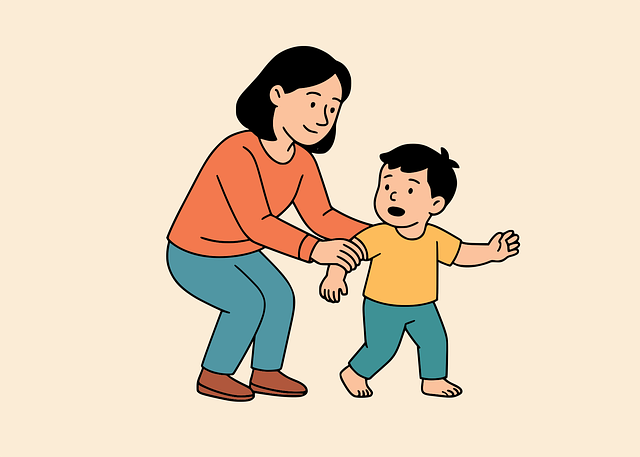Oregon's child welfare system is a collaborative effort between agencies, organizations, and communities, focusing on protecting at-risk children. Advocacy initiatives emphasize family stability, resource accessibility, and cultural competency. Key efforts include foster care, adoption support, and preventative interventions, with a goal of enhancing practices through evidence-based policies. The state has made strides in government-led programs, community partnerships, volunteer networks, and fundraising, creating a strong foundation for child welfare advocacy. Future strategies involve measuring success via KPIs, refining practices, fostering collaboration, leveraging technology, and improving community engagement to ensure all children thrive in safe environments.
Oregon’s child welfare system is a complex landscape where dedicated advocates play a vital role in shaping positive outcomes for vulnerable youth. This article explores the multifaceted approach to child welfare advocacy in the state, from community-led initiatives to government support. We delve into understanding the system, key advocacy drives, and the power of volunteers. Additionally, we examine successful programs and look ahead to future strategies, highlighting Oregon’s commitment to enhancing child welfare through robust advocacy efforts. Discover how these collaborative actions are transforming lives and ensuring a brighter future for Oregon’s children.
- Understanding Oregon's Child Welfare System: A Foundation for Advocacy
- Key Advocacy Initiatives Led by Community Organizations in Oregon
- Government Programs and Policies Supporting Child Welfare Advocacy
- The Role of Volunteers and Fundraising in Oregon's Child Welfare Advocacy Efforts
- Measuring Success and Future Directions for Oregon's Child Welfare Advocacy Programs
Understanding Oregon's Child Welfare System: A Foundation for Advocacy

Oregon’s child welfare system is a complex network designed to protect and nurture at-risk children within the state. At its core, this system involves various agencies, organizations, and communities working collaboratively to provide services such as foster care, adoption support, and preventative interventions. Understanding this intricate web is fundamental to any advocacy efforts aimed at enhancing Oregon’s child welfare practices. By delving into the existing strategies and identifying areas for improvement, advocates can drive meaningful change.
Child welfare advocacy initiatives in Oregon focus on strengthening the system from within. This includes supporting programs that promote family stability, improving access to resources for vulnerable populations, and ensuring cultural competency across all child welfare services. Through these advocacy measures, the goal is to create a more responsive and effective system that meets the unique needs of every child and family involved.
Key Advocacy Initiatives Led by Community Organizations in Oregon

Oregon boasts a vibrant community of organizations dedicated to advancing child welfare through various advocacy initiatives. These groups play a pivotal role in shaping policies and promoting strategies that protect and support vulnerable children across the state. One notable focus area is ensuring access to quality education for at-risk youth, with programs aimed at reducing school drop-out rates and providing additional resources for struggling students.
Additionally, Oregon advocacy organizations actively push for improved mental health services for children and families, recognizing the critical link between emotional well-being and overall development. Their efforts have led to increased funding for community-based therapy programs and enhanced access to counseling services in schools. These initiatives reflect a holistic approach, addressing various aspects of child welfare to create lasting positive change for Oregon’s youth.
Government Programs and Policies Supporting Child Welfare Advocacy

Oregon has implemented several government programs and policies to support and strengthen child welfare advocacy initiatives. The state recognizes the importance of proactive measures to ensure the well-being and safety of its young population, and as such, has established various strategies to address systemic issues within the child welfare system. One notable program is the Oregon Child Welfare Policy Council, which brings together experts, practitioners, and community members to develop and review evidence-based policies aimed at improving outcomes for foster care youth.
These efforts are further amplified by partnerships between state agencies, non-profit organizations, and local communities. For instance, the Department of Human Services collaborates with advocacy groups to provide resources and training for professionals working in child welfare. Such collaborations ensure that Oregon’s advocacy support is comprehensive, well-coordinated, and aligned with the evolving needs of children and families within the state.
The Role of Volunteers and Fundraising in Oregon's Child Welfare Advocacy Efforts

Oregon’s child welfare advocacy efforts are significantly bolstered by a dedicated network of volunteers and robust fundraising initiatives. These essential components play a pivotal role in supporting the state’s various advocacy programs, which aim to protect and promote the well-being of vulnerable children. Volunteers offer their time and skills to engage in direct support services, community outreach, and awareness campaigns, thereby enhancing the reach and impact of child welfare strategies.
Through fundraising activities, non-profit organizations and advocacy groups secure financial resources necessary for implementing effective programs. These funds are instrumental in providing critical services, such as emergency shelter, therapy, education, and job training for at-risk youth and their families. The collective efforts of volunteers and donors create a strong foundation upon which Oregon can continue to build and strengthen its child welfare advocacy initiatives.
Measuring Success and Future Directions for Oregon's Child Welfare Advocacy Programs

Measuring success and charting future directions for Oregon’s child welfare advocacy programs is a multifaceted endeavor. Key performance indicators (KPIs) play a crucial role in evaluating the effectiveness of these initiatives, allowing advocates to understand the impact of their efforts on the lives of vulnerable children. By tracking metrics such as reduced placement times, improved family stability rates, and enhanced access to support services, Oregon can ensure that its advocacy programs are making meaningful strides towards the well-being of children and families.
Looking ahead, future directions for child welfare advocacy in Oregon should focus on refining evidence-based strategies, fostering collaboration across stakeholders, and leveraging technology to streamline service delivery. Enhancing community engagement and building partnerships with local organizations can broaden the reach of advocacy efforts, while innovative approaches like data analytics and digital platforms can help personalize support for families. By continually adapting to emerging challenges and best practices, Oregon’s child welfare advocacy programs can strive for a future where all children thrive in safe, stable, and nurturing environments.






